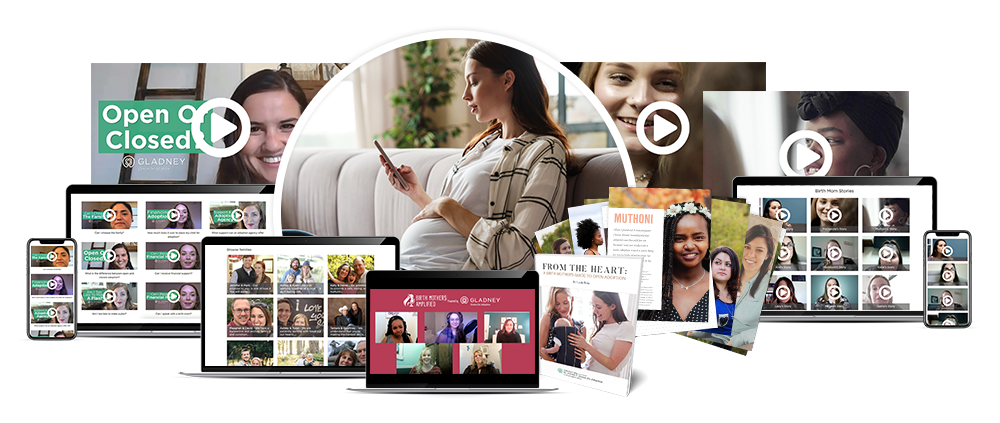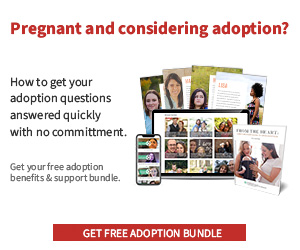As a mother through adoption, there is one person I often think about, pray for, and honestly wish I got to spend time with: the woman who gave my child life. Our story is all too common in the international adoption community because open adoption is either looked down upon or not an option. On the other hand, in the United States, open adoption is becoming common practice even though there is still not enough understanding and acceptance of the concept or the difference between it and closed adoption. I wish we were able to connect my daughter to her biological family–or even know anything about them. Open adoption allows adoptive families to retain their child’s roots. While open adoption can seem frightening and confusing, it is beautiful and healing for many families.
Many aspects of the adoption community are misunderstood by the general population. Open adoption falls under that category. On the outside looking in, people can easily judge and villanize parents who choose to place their child for adoption. Especially when it comes to open adoption, education is crucial to having an open mind and an open heart. So, in an effort to help destigmatize the practice, let’s first understand the difference between closed and open adoption.
Closed Adoption
There are many helpful articles on the topic of closed adoption that explain the concept in detail. A simple way to think of closed adoption is that after an adoption is finalized, the birth records would be locked, and the adoptive family, as well as the child, would no longer be able to contact or even find information about their birth family. The birth records would be considered “closed” by the governing authority that finalized the adoption (typically, the state the child was adopted in). While many states are allowing adult adoptees to access these closed records, it is still a controversial topic. Debates in the adoption community and beyond continue to thrive.
The practice of closed adoption has become the less popular type of adoption. The reason for closed adoptions of the past was mostly due to stigma around both the birth mothers and the adoptive parents. Anyone who has placed a child for adoption knows how complicated, painful, and emotional the process can be. It is one of the most difficult choices a person may have to make in their entire life, and the choice affects so many people: the child, the birth mother’s family, her community, as well as the family she chooses for her child. The prevailing thought at the time was for birth mothers to place the child for adoption and then try to forget and move on, as if adoption is that simple.
Closed adoption protected the birth mothers and families from being contacted, a drastic difference from open adoption. The sad reality is, too many women were coerced by their families–and even adoption agencies–to place their children for adoption when some didn’t even want the closed adoptions that were forced on them. Some of these mothers were children themselves and had very little agency over what happened to their babies. Once the records of the adoptions were closed, it was next to impossible for adopted children to find their birth families or for birth families to ever find out what happened to their children after the adoption was finalized. While closed adoption worked for some families, new research is showing that closed adoption can be harmful to all parties involved.
The good news is, adoption records in many states are released to some adult adoptees searching for their birth families. And, even better good news: with more research and education, birth and adoptive families are choosing open adoption more and more. Open adoption is becoming the norm.
Open Adoption
Open adoption is a simple concept, but immensely complicated because every family practices it so differently. To define it most simply, open adoption allows some kind of contact between the birth mother or birth family and the adopted child. During the adoption process, the adoptive family and the birth family come to an agreement about contact with the child after all adoption is finalized. These agreements are legally binding in some states, but that is not always the case. In all cases, however, when a birth mother chooses a family, they make an agreement for the open adoption in good faith.
Some families have regular contact through phone calls, emails, mailing letters, and pictures. Some birth mothers only ask for a yearly picture with an update on the child. Some birth families want regular visits in person. This is all decided before the child is adopted, and arrangements sometimes change over time. The birth parent no longer has custodial or legal rights to the child after the adoption is finalized, but they can still have regular contact through open adoption.
There is a misconception that the child will be confused about who their parents are if the birth parents are regularly involved with his or her life. People might suggest that the child will want to run away to their birth family. Those ideas are not true. Many adult adoptees I know that had the privilege of an open adoption have a very clear understanding of who their parents are. There are many families that have beautiful relationships between adoptive parents and birth parents because all the adults in the situation are coming together to give the child the best chance at life.
My Opinion of the Difference between Open and Closed Adoption
Open adoption can be messy, complicated, and difficult, but it is good for a child to know where they came from, and as they grow, it is essential for them to know their whole story. It may be difficult, but it is a part of who they are, and knowing where they come from makes a big difference in how they become who they will become.
Pregnant and considering adoption?
Get your free adoption benefits and support bundle

I know of a family that wanted their adopted son to know his birth mother. Unfortunately, due to mental health issues, she was often institutionalized and unable to have regular contact. She was so unwell that she often didn’t know where she was or who she was. It was deemed by a court that she was unable to care for her child, so his foster parents adopted him. They were clear with their son about his mother’s condition, and he remembered her. He made up stories and would pretend she would come back for him. Because he couldn’t see her, he imagined a version of her in his head that was unhealthy and unrealistic, and he struggled through his whole childhood with missing her and wanting to know her. He believed that his adoptive parents were keeping his birth mother away, though that was not at all true.
He is nearing adulthood now and making sense of it, but if he had had regular contact with her throughout the years, it would have been difficult for the boy to make up unhealthy perceptions of his mother because he could see the truth, and the difference it would have made in his life could have been drastic. His adopted parents wished they could have provided opportunities for him to know her. Through years of counseling, there has been gradual healing, but there is a pain when an adoption is closed, no matter the reason.
Adoptions in the past were closed to hide the shame of unwed or teen pregnancy, drugs or substance abuse, and more. Now we know that choosing to place a child for adoption is not that simple; there shouldn’t be stigmas around the adoption process. It gives the child the best chance at life, and that truth–from a biological family member’s own mouth–should not be hidden or sealed in court records. Besides, an adoptee may need to know something about their family medical history! Or they may just want to know where they came from. Regardless, I believe that it’s important for a child to have access to their heritage.
I know that if I had the opportunity to meet my daughter’s mother, I would. I would be forever grateful to have my daughter know the woman who gave her life. She is the reason I am a mother to the most beautiful and amazing child, and I thank her every day for it. While we have a closed adoption, my family hopes the international community will follow the United States’ example and make open adoption the norm for all adoptees in the future because of the difference it makes in a child’s life.


